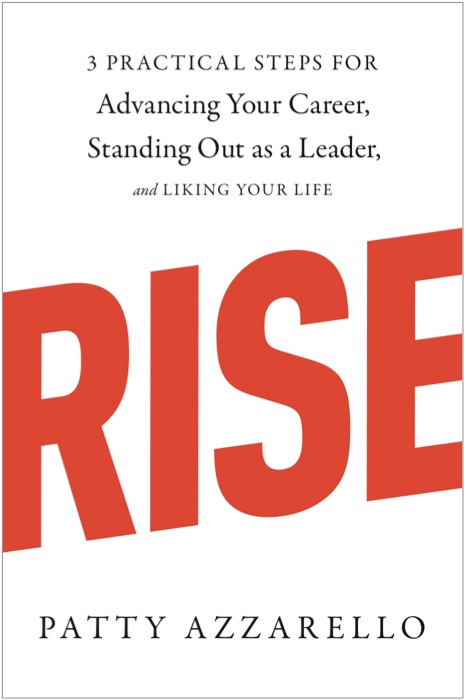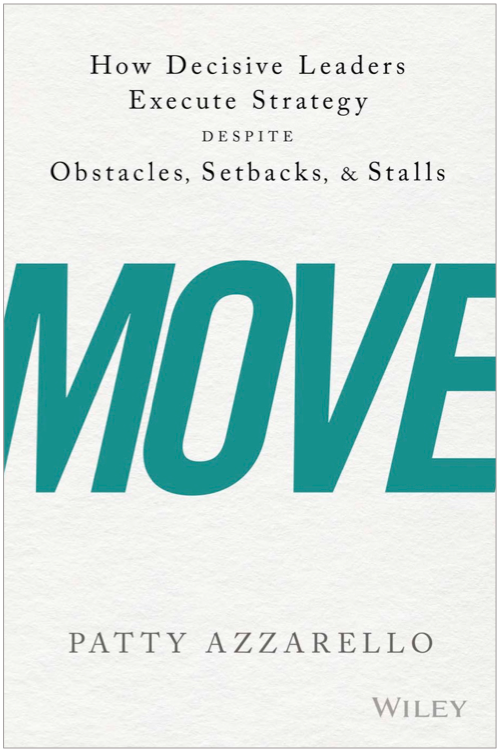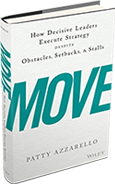 I don’t know what it is about the start to 2010 but, 4 people have talked to me about executive presence in the past week!
I don’t know what it is about the start to 2010 but, 4 people have talked to me about executive presence in the past week!
Presence and Success
The conversations are about confidence, respect, being valued, being recognized, getting your ideas heard, and taking risks.
You can get good at it
This comes naturally to some people, but probably fewer than you think.
People often say to me, well this is easy for you, this is one of your strengths. I can tell you this was not always so.
I can remember early in my career being very nervous, timid, or awkward in certain situations, and being worried and defensive when I had to meet or spend time with “important people”.
And because I was always young for the job I was in, I was often coached that I needed to work on my “gravitas” my or executive presence.
I eventually got there. Here is what I have learned:
Executive Presence has 4 parts
1. How you Feel
2. How you Look
3. How you Behave
4. Never appearing overwhelmed
1. How you feel
Be who you are
If you are being who you really are, you will be comfortable. You will come across as strong.
Here is where people argue, but I can’t do that. Who I really am is a surfer, and I wear beach clothes and tell jokes and I can’t be like that at work.
The trick is to still be the comfortable, relaxed person you are on the weekend, and bring all that positive, real surfer-dude energy to your work environment. You don’t need to bring the beach sand and the margaritas to work to be who you authentically are.
If you are positive, focused, like to challenge yourself, and have a sense of humor solving tough work issues, people will be drawn to that and respect you (as long as you get the work done too!)
If you instead overly contrive a non-surfer, buttoned-up, false work-persona, you will never be fully comfortable in it and your executive presence will always take a hit.
Be confident
This is really the crux of the issue. It’s hard to be comfortable if you are not confident. There are two schools of thought here.
1. Go into therapy for years to work on your self confidence
2. Do it anyway – Be fearless even when you are not confident.
I read an interview with the comedian, singer and improv performer Wayne Brady, which had a big impact on me.
I am paraphrasing, but he said when he needs to do an improv or anything on stage, if he is confident about it, he does it full on, all the way. But if he is standing on stage thinking, “hmm, I’m not sure this one is going to work, or I’m not sure this is going to be good” He does it full on, all the way, anyway.
Don’t ever back off when you are not confident
He said that it never helps to second guess yourself and approach a performance apologetically in case it might not work out.
In fact, being tentative about what you are doing will guarantee that it doesn’t go well.
I have thought about that every time I have been in a situation where I was not as comfortable or as confident about my role, my performance, my argument, or my task, and I can tell you, it makes a huge difference. It’s always better than the moderated, apologetic version.
Fearlessness is a requirement
Fearlessness sets successful people apart. You probably know lots of people who are not as talented as you, but have more executive presence. Why not allow yourself at least that much?
Something that I talk about in my upcoming book in a chapter called “Executive Confessions” is that: Everyone is Bluffing.
There is no executive that knows everything about the job they are in.
They are successful because they are willing to put themselves out there, make presentations, make decisions, and lead even though they don’t know everything personally.
The people that scramble around to learn and master every detail are the ones who get stuck because:
1. it is an endless task
2. so it uses up all your time
3. and you never actually step up and get around to leading
They believe that they can only be competent (and therefore confident and comfortable) if they know all the details. But they are sacrificing their executive presence, and failing to lead.
Think about it this way. By definition, this goes against building any executive presence because people always SEE you in the weeds.
2. How you look
It matters. You may think that what you say and think and do all matter more, and they do, but what about the people that only ever SEE you?
When you walk into a room, if you want to be seen as someone who is in charge, someone with presence, you need to look the part.
I have seen executives who are very casual get away without this, but their confidence and other leadership behaviors are off the charts.
If you want to stack the deck in your favor, pay attention to your appearance. You don’t need to be a fashionista, but you should make sure your clothes really fit well, your shoes are not grubby, and your hair style and glasses are of this century.
No one ever felt more confident by wearing a cheap suit.
In fact I heard that when Sean Connery first started playing James Bond, they got him a really good suit and then encouraged him to wear it all week and even sleep in it. This goes back to feeling comfortable. One of the reasons Sean Connery pulled off James Bond because he was comfortable in the suit!
Trick: Quality clothes that really fit you (superficial outside improvement) will make you feel more confident (meaningful inside improvement).
3. How you behave
How you talk and act, and what you say and do, either build or degrade your executive presence. Being comfortable and confident give you a huge head start, of course, but the specifics matter too.
Whether you are in a room with your team, a large function in your company, or a meeting with your executive committee, board or other big, scary people, it is important to show up as, and be recognized as a leader with strong presence.
Step up!
If you are in a room with your team, lead. Step up. Don’t just be in the room or at the dinner with them. Say something. Have a point of view. Reach out to them. Bring them together as a team with your words and actions.
If you are in a room with big executives, show up. Meet them. Get a sense of what they are most interested in and talk to them about that. Ask some questions. Get input and feedback. (fearless, remember).
Don’t just stick to your prepared presentation and your work. Do some research. Have a story that they will relate to that has nothing to do with work.
If you stay in the shadows, or are timid because you are nervous about being there, you are showing them you don’t really belong there. Be a full person, willing to engage.
4. Never Appearing Overwhelmed
This is probably a sub-category of How you Behave, but it is one of the most hazardous to your executive presence.
Think about it this way. If you appear overwhelmed in what you are currently doing, you are by definition showing that you are not ready for a bigger job.
Part of executive presence is to look like you are doing your job with ease and grace. Even if behind the scenes it is chaos, what people should see is you calm and in control.
Deal with the overwhelm privately.
Don’t cancel meetings at the last minute, don’t act rushed and impatient.
Don’t get upset or defensive when people do things that throw you off course. Just say “let me take that input and get back to you”, and then go off privately and scream, get frustrated, re-work or not, and go back calm and in control.


